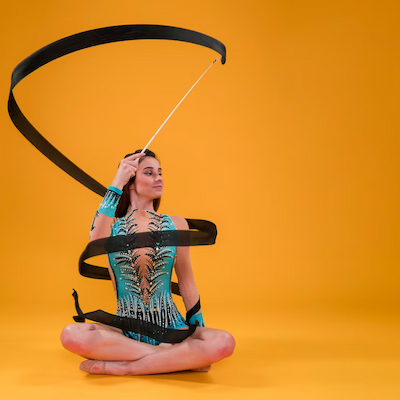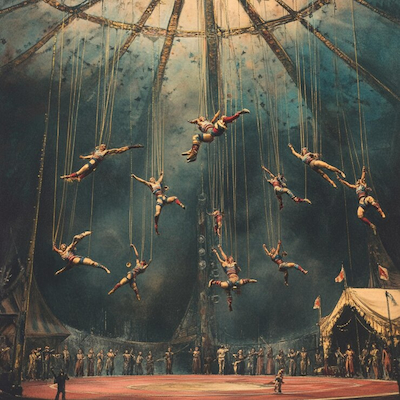
The circus is one of the oldest and most fascinating forms of artistic expression in human history. From its origins in ancient Rome to its contemporary evolution, the circus has always been a space of wonder and amazement. Combining acrobatics, clowning, and artistic performances, the circus has the power to transport audiences into a world of fantasy and emotion. Over the years, this art form has adapted and reinvented itself, incorporating new techniques and styles while preserving its essential mission of surprise and entertainment.
In contemporary times, the circus is not only a form of entertainment but also a platform for artistic and social expression. Artists from diverse backgrounds come together to create performances that reflect social, cultural, and emotional issues, expanding the reach and relevance of the circus as an artistic expression in today’s society. This reinvention not only attracts new audiences but also challenges traditional norms by exploring new narratives and immersive experiences.
How Contemporary Circus Performances Work
Contemporary circus performances are built through a combination of physical skills, creativity, and storytelling. Performers, often trained in various disciplines such as dance, theater, and martial arts, use these abilities to create cohesive and impactful shows. Each act is carefully choreographed, integrating elements of acrobatics, juggling, and strength-based feats to captivate the audience and evoke emotion.
Beyond physical ability, narrative plays a central role in contemporary circus. Artists create stories that often reflect personal experiences or address relevant social issues. This narrative approach allows the audience to connect emotionally with both the performers and the themes, making the circus experience more meaningful. Costumes, music, and lighting are also carefully chosen to support the narrative and enhance the overall atmosphere.
Another important aspect of contemporary circus is interdisciplinary collaboration. Many contemporary circus companies work with artists from other fields such as musicians, filmmakers, and designers to create multimedia experiences that challenge traditional circus conventions. This fusion of art forms enriches performances and broadens the circus’s reach, drawing in a wide and engaged audience.
Finally, inclusion and diversity are central themes in contemporary circus performances. Many artists strive to represent marginalized voices and explore themes of identity, gender, and social class. This approach not only enriches the content but also challenges audiences to reflect on their own perspectives and prejudices, positioning the circus as a space for dialogue and social transformation.

Advantages of the Circus as Artistic Expression and Its Contemporary Reinvention
Contemporary circus presents many advantages that make it a unique and relevant form of artistic expression in today’s society. One of its key strengths is its ability to break down cultural and social barriers. Circus performances transcend spoken language, using the body and artistic expression as tools of communication. This allows people from diverse backgrounds to connect and share experiences, fostering a sense of community and belonging.
Another significant advantage is the encouragement of creativity and innovation. The contemporary circus is a space where artists are free to experiment with new ideas, techniques, and styles. This creative freedom results in unique and surprising performances that challenge audience expectations and expand the limits of what circus can be. This spirit of innovation also attracts new talent and nurtures new generations of artists.
The circus also plays an important role in education and skill development. Many contemporary circus companies offer training programs and workshops, allowing people of all ages to learn circus arts. These programs not only teach acrobatics and juggling techniques but also promote values such as discipline, teamwork, and self-confidence. This educational aspect contributes to the personal and social development of participants.
Finally, the contemporary circus has the ability to address social and political issues in accessible and impactful ways. Performances often reflect important themes such as inequality, identity, and sustainability, sparking reflection and dialogue. This approach not only enriches the content of the performances but also positions the circus as an engaged and conscious art form that aims to promote change and social transformation.
How the Circus as Artistic Expression and Its Contemporary Reinvention Stands Out in Culture
Contemporary circus stands out in today’s culture for its ability to reinvent itself and adapt to social and artistic change. Here are some ways it stands out in the contemporary cultural scene:
-
Integration of multiple art forms: Contemporary circus often incorporates elements of dance, theater, music, and visual arts, creating multimedia experiences that engage and attract diverse audiences.
-
Exploration of social themes: Circus performances increasingly address relevant issues such as inequality, identity, and environmental awareness, encouraging public dialogue and reflection.
-
Inclusion and diversity: Contemporary circus seeks to represent marginalized voices and promote diversity, challenging stereotypes and creating a welcoming, inclusive space.
-
Interdisciplinary collaboration: Many companies work with artists from other fields—filmmakers, musicians, designers—resulting in innovative, boundary-breaking performances.
-
Education and training: Contemporary circus organizations offer workshops and training programs for people of all ages, teaching not only artistic skills but also life values such as discipline and cooperation.
-
Attraction of new audiences: The reinvention of the circus has brought in younger and more diverse audiences, who are seeking new and immersive cultural experiences.
These characteristics make contemporary circus a vibrant and relevant form of art that continues to delight and inspire audiences around the world. Its capacity to adapt and evolve ensures its position as a dynamic and ever-changing artistic expression.
The Circus and the Power of Emotional Connection
One of the most powerful aspects of contemporary circus is its ability to forge deep emotional connections with the audience. In a world saturated by fast content and digital distractions, the live, human element of circus performance creates a unique kind of intimacy. Audiences are not just passive spectators—they are participants in a shared emotional journey, often feeling awe, tension, joy, and even vulnerability in real time.
Through expressive movement, daring physical feats, and poignant storytelling, circus performers lay bare their humanity on stage. This vulnerability resonates with audiences, creating moments of real empathy and reflection. Whether through a solo aerial act that explores isolation, or a clown piece that addresses grief with humor and grace, the emotional range of the contemporary circus is vast and deeply human.
This emotional power also extends beyond the performance itself. Many contemporary circus companies engage in community outreach, using circus as a tool for healing, therapy, and social inclusion. Workshops in hospitals, refugee centers, and underserved communities demonstrate how the expressive power of circus can transform not only those on stage but also those watching and participating.
In this way, the circus becomes more than art—it becomes a bridge between people, a mirror of society, and a reminder of the beauty and resilience of the human spirit.

Did You Enjoy Exploring the Circus as Artistic Expression and Its Contemporary Reinvention?
The circus is no longer just about spectacle—it is a dynamic, evolving form of art that reflects society, challenges conventions, and connects deeply with its audience. From breathtaking acrobatics to meaningful social commentary, contemporary circus continues to inspire and amaze.
If this journey through the world of circus sparked your curiosity, there’s so much more to discover. Explore performances, read about circus companies, or even take part in a workshop. The reinvention of circus art proves that tradition and innovation can coexist beautifully—and perhaps even change how we see the world.
Frequently Asked Questions
What is the circus as artistic expression and its contemporary reinvention?
The circus is an art form that mixes acrobatics, clowning, and spectacle. Its contemporary reinvention brings in new ideas and styles, making it more dynamic and creative.
What are the main elements of contemporary circus?
The main elements include acrobatics, theater, dance, and music. They work together to tell stories and evoke emotion.
How has the circus adapted to social and cultural changes?
The circus now addresses current and social themes. It reflects issues like diversity and inclusion, offering new perspectives.
What is the importance of circus in arts education?
Circus promotes skills like teamwork and creativity. It helps students express themselves in unique ways.
Where can I see contemporary circus performances?
You can find shows at festivals, theaters, and even traveling circuses. Keep an eye on cultural events in your city.

